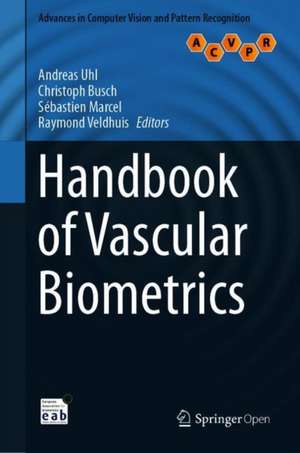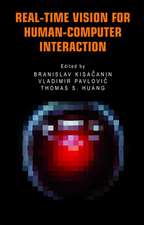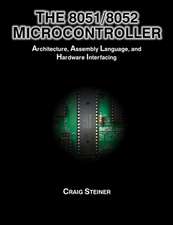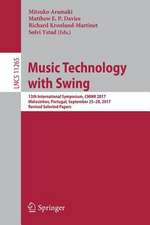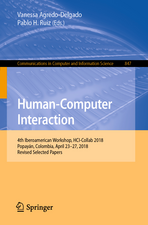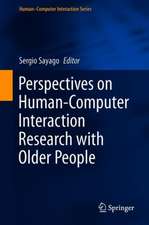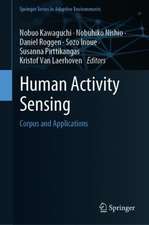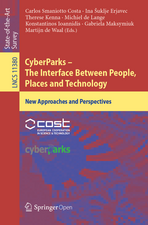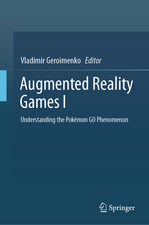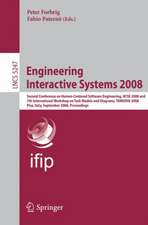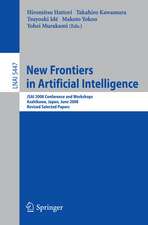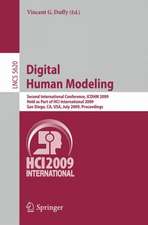Handbook of Vascular Biometrics: Advances in Computer Vision and Pattern Recognition
Editat de Andreas Uhl, Christoph Busch, Sébastien Marcel, Raymond Veldhuisen Limba Engleză Hardback – 25 noi 2019
| Toate formatele și edițiile | Preț | Express |
|---|---|---|
| Paperback (1) | 344.93 lei 6-8 săpt. | |
| Springer International Publishing – 11 sep 2020 | 344.93 lei 6-8 săpt. | |
| Hardback (1) | 379.98 lei 6-8 săpt. | |
| Springer International Publishing – 25 noi 2019 | 379.98 lei 6-8 săpt. |
Din seria Advances in Computer Vision and Pattern Recognition
- 20%
 Preț: 998.36 lei
Preț: 998.36 lei - 20%
 Preț: 409.80 lei
Preț: 409.80 lei - 20%
 Preț: 654.70 lei
Preț: 654.70 lei - 20%
 Preț: 775.30 lei
Preț: 775.30 lei - 20%
 Preț: 867.15 lei
Preț: 867.15 lei - 20%
 Preț: 241.87 lei
Preț: 241.87 lei - 20%
 Preț: 659.83 lei
Preț: 659.83 lei - 20%
 Preț: 1084.17 lei
Preț: 1084.17 lei - 20%
 Preț: 328.60 lei
Preț: 328.60 lei - 20%
 Preț: 650.08 lei
Preț: 650.08 lei - 20%
 Preț: 644.66 lei
Preț: 644.66 lei - 20%
 Preț: 652.54 lei
Preț: 652.54 lei - 20%
 Preț: 646.80 lei
Preț: 646.80 lei - 20%
 Preț: 993.60 lei
Preț: 993.60 lei - 20%
 Preț: 1174.92 lei
Preț: 1174.92 lei - 20%
 Preț: 646.80 lei
Preț: 646.80 lei - 20%
 Preț: 672.36 lei
Preț: 672.36 lei - 20%
 Preț: 1166.52 lei
Preț: 1166.52 lei - 20%
 Preț: 920.33 lei
Preț: 920.33 lei - 20%
 Preț: 825.78 lei
Preț: 825.78 lei - 20%
 Preț: 666.58 lei
Preț: 666.58 lei - 18%
 Preț: 953.65 lei
Preț: 953.65 lei - 20%
 Preț: 999.35 lei
Preț: 999.35 lei - 20%
 Preț: 655.02 lei
Preț: 655.02 lei - 20%
 Preț: 595.16 lei
Preț: 595.16 lei - 20%
 Preț: 647.61 lei
Preț: 647.61 lei - 20%
 Preț: 658.33 lei
Preț: 658.33 lei - 20%
 Preț: 1649.61 lei
Preț: 1649.61 lei - 20%
 Preț: 991.46 lei
Preț: 991.46 lei - 20%
 Preț: 994.08 lei
Preț: 994.08 lei - 20%
 Preț: 1062.57 lei
Preț: 1062.57 lei - 20%
 Preț: 985.16 lei
Preț: 985.16 lei - 20%
 Preț: 640.35 lei
Preț: 640.35 lei - 20%
 Preț: 656.03 lei
Preț: 656.03 lei - 18%
 Preț: 950.52 lei
Preț: 950.52 lei - 20%
 Preț: 652.41 lei
Preț: 652.41 lei - 20%
 Preț: 644.81 lei
Preț: 644.81 lei - 20%
 Preț: 996.40 lei
Preț: 996.40 lei
Preț: 379.98 lei
Preț vechi: 474.98 lei
-20% Nou
Puncte Express: 570
Preț estimativ în valută:
72.71€ • 76.19$ • 60.11£
72.71€ • 76.19$ • 60.11£
Carte tipărită la comandă
Livrare economică 12-26 aprilie
Preluare comenzi: 021 569.72.76
Specificații
ISBN-13: 9783030277307
ISBN-10: 3030277305
Pagini: 531
Ilustrații: XVIII, 533 p. 197 illus., 149 illus. in color.
Dimensiuni: 155 x 235 x 32 mm
Greutate: 0.94 kg
Ediția:1st ed. 2020
Editura: Springer International Publishing
Colecția Springer
Seria Advances in Computer Vision and Pattern Recognition
Locul publicării:Cham, Switzerland
ISBN-10: 3030277305
Pagini: 531
Ilustrații: XVIII, 533 p. 197 illus., 149 illus. in color.
Dimensiuni: 155 x 235 x 32 mm
Greutate: 0.94 kg
Ediția:1st ed. 2020
Editura: Springer International Publishing
Colecția Springer
Seria Advances in Computer Vision and Pattern Recognition
Locul publicării:Cham, Switzerland
Cuprins
1. State of the Art in Vascular Biometrics.- 2. A High Quality Finger Vein Dataset Collected using a Custom Designed Capture Device.- 3. Open Vein - An Open Source Modular Multi-Purpose Finger-vein Scanner Design.- 4. An Available Open Source Vein Recognition Framework.- 5. Use Case of Palm Vein Authentication.- 6. Evolution of Finger Vein Biometric Devices in Terms of Usability. 7. Towards Understanding Acquisition Conditions Influencing Finger-Vein Recognition.- 8. Improved CNN-Segmentation based Finger-Vein
Recognition Using Automatically Generated and Fused Training Labels.- 9. Efficient Identification in Large-Scale Vein Recognition Systems using Spectral Minutiae Representations.- 10. Different Views on the Finger - Score Level Fusion in Multi-Perspective vein Recognition.
Notă biografică
Dr. Andreas Uhl is a Full Professor for Computer Science at the Department of Computer Science at the University of Salzburg, Austria and leads the Multimedia Signal Processing and Security Lab. His other publications include the Springer title Iris Biometrics: From Segmentation to Template Security and and Image and Video Encryption: From Digital Rights Management to Secured Personal Communication
Dr. Christoph Busch is a member of the Department of Information Security and Communication Technology (IIK) at the Norwegian University of Science and Technology (NTNU), Norway, and of the Computer science faculty at Hochschule Darmstadt (HDA), Germany. He also lectures in Biometric Systems at the Technical University of Denmark (DTU).
Dr Sébastien Marcel is a Senior Researcher and Head of the Biometrics Security and Privacy group at the Idiap Research Institute, Martigny, Switzerland. His other publications include the Springer title Handbook of Biometric Anti-Spoofing.
Dr. Raymond Veldhuis is a Full Professor of Biometric Pattern Recognition in the Data Management and Biometrics group at the University of Twente, Enschede, The Netherlands.
Dr. Christoph Busch is a member of the Department of Information Security and Communication Technology (IIK) at the Norwegian University of Science and Technology (NTNU), Norway, and of the Computer science faculty at Hochschule Darmstadt (HDA), Germany. He also lectures in Biometric Systems at the Technical University of Denmark (DTU).
Dr Sébastien Marcel is a Senior Researcher and Head of the Biometrics Security and Privacy group at the Idiap Research Institute, Martigny, Switzerland. His other publications include the Springer title Handbook of Biometric Anti-Spoofing.
Dr. Raymond Veldhuis is a Full Professor of Biometric Pattern Recognition in the Data Management and Biometrics group at the University of Twente, Enschede, The Netherlands.
Textul de pe ultima copertă
This open access handbook provides the first comprehensive overview of biometrics exploiting the shape of human blood vessels for biometric recognition, i.e. vascular biometrics, including finger vein recognition, hand/palm vein recognition, retina recognition, and sclera recognition. After an introductory chapter summarizing the state of the art in and availability of commercial systems and open datasets/open source software, individual chapters focus on specific aspects of one of the biometric modalities, including questions of usability, security, and privacy. The book features contributions from both academia and major industrial manufacturers.
Caracteristici
Is the first comprehensive volume dedicated to vascular biometrics Focuses on reproducible research, enabling readers to actively use the material presented Provides expert perspectives from both academia and industry
